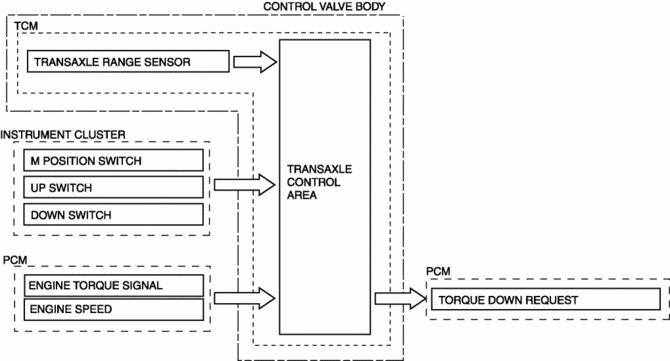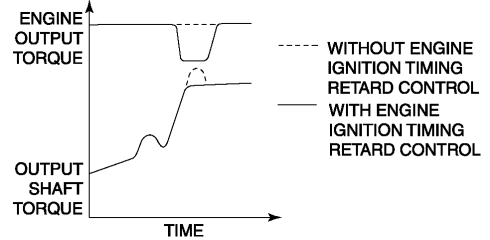Mazda CX-5 Service & Repair Manual: Engine Transaxle Integration Control [Fw6 A EL, Fw6 Ax EL]
Outline
-
The TCM controls engine output torque and reduces transaxle output shaft torque fluctuation during auto shifting, and reduces shock occurring from the vehicle during shifting.
Construction

Operation
-
During auto shifting, the TCM sends the torque reduction request signal using the CAN system and temporarily reduces the engine output torque by the engine ignition timing retard control. As a result, transaxle output shaft torque fluctuation is reduced during auto shifting by smooth engagement of the clutch.

-
In addition, the TCM receives the engine output torque from the PCM via the CAN signal to determine the clutch engagement pressure according to the engine output torque. As a result, the clutch hydraulic control setting accuracy is increased and smooth shift performance is achieved.
 General
General
...
 Output Gear [Fw6 A EL, Fw6 Ax EL]
Output Gear [Fw6 A EL, Fw6 Ax EL]
Purpose/Function
The output gear transmits the drive force transmitted from the primary gear
and secondary gear to the differential.
Construction
The output gear is engaged with ...
Other materials:
Front Wheel Hub Bolt Replacement
1. Remove the brake calliper component from the steering knuckle and suspend
it out of the way using a cable.
2. Remove the disc plate.
3. Remove the wheel hub bolt using the SST as shown in the figure.
4. Place a new wheel hub bolt in the wheel hub.
5. Install the wheel hub by placi ...
Front Fender Junction Installation [Panel Replacement]
Symbol Mark
Installation Procedure
1. When installing new parts, measure and adjust the body as necessary to conform
with standard dimensions.
2. Drill holes for the plug welding before installing the new parts.
3. After temporarily installing new parts, make sure the related parts fit p ...
Front Door Hinge Removal/Installation
1. Disconnect the negative battery cable..
2. Remove the following parts:
a. Front bumper.
b. Front combination light.
c. Front bumper slider.
d. Front over fender.
e. Front fender panel.
f. Front door.
3. Remove in the order shown in the figure.
1
Bolt
...
